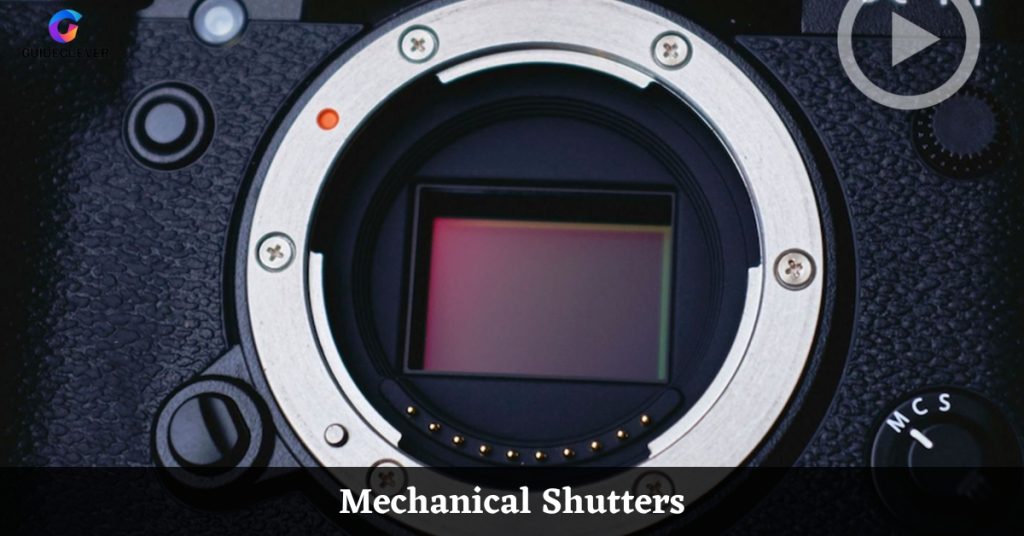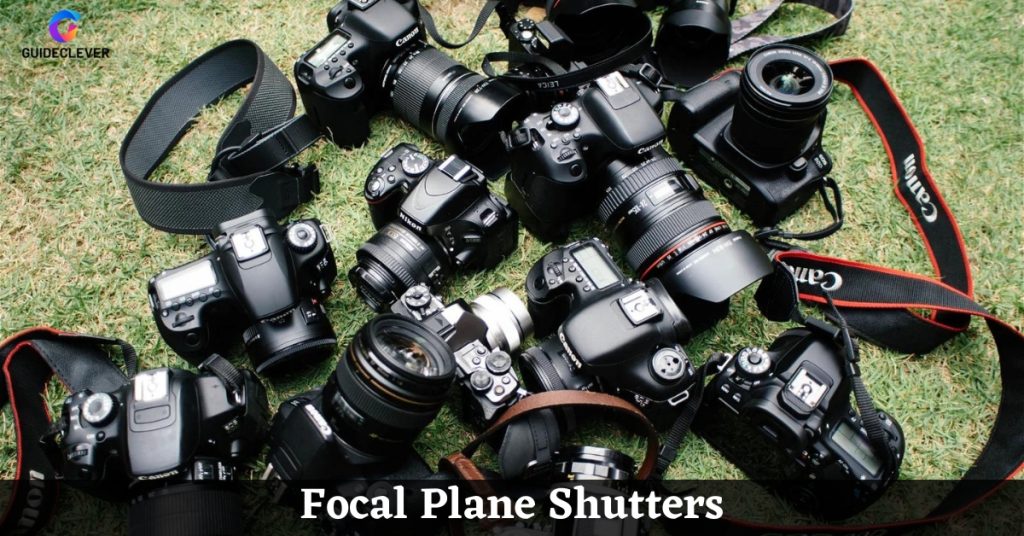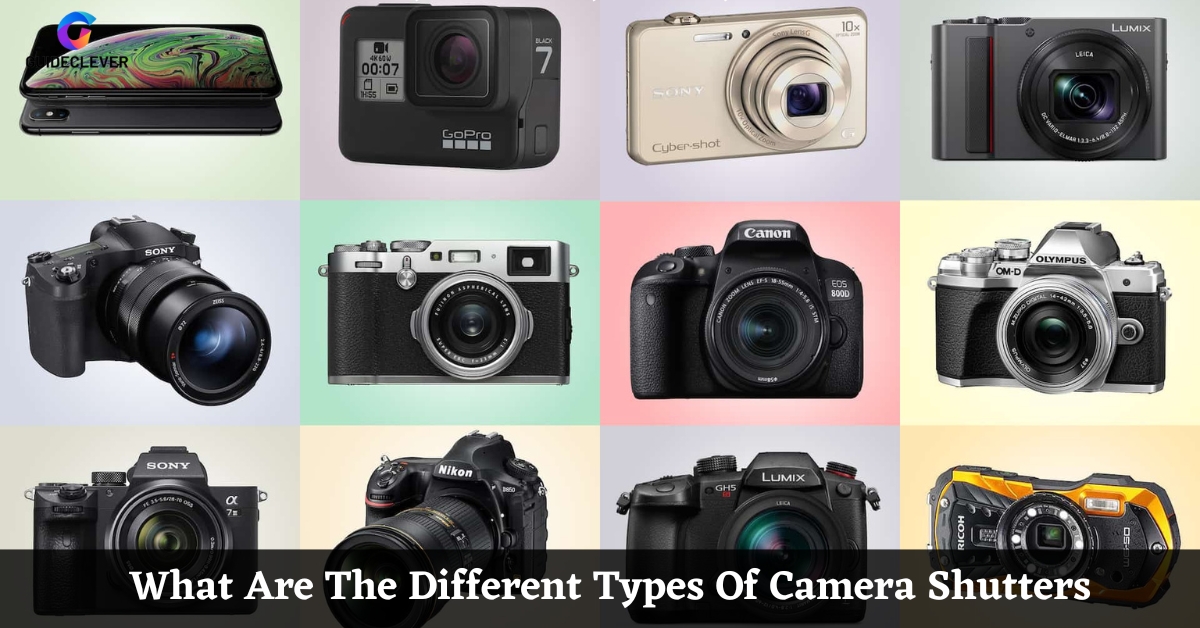A camera shutter is an important part of a camera. It controls light exposure. It sits between the lens and the image sensor or film. Shutter speed affects how much light reaches them. We will cover What Are The Different Types Of Camera Shutters in this post.
Shutter speed matters. It freezes or blurs motion. It adds an artistic touch. Choose fast speed to freeze action. Choose slow speed for motion blur. Create stunning effects.
Sync with flash is another role of the shutter. It coordinates with the flash unit. Proper exposure is ensured. No more dark spots or uneven lighting.
Understanding camera shutters is crucial. Control exposure, capture motion, and unleash creativity. Master this tool, and capture amazing photographs.
Contents
Mechanical Shutters

Mechanical shutters are important parts of cameras. They manage how much light goes into the camera’s sensor or film. Let’s discover how they work and the good things they bring, as well as some things to consider.
Description:
Mechanical shutters are like curtains inside the camera. When you press the button, they quickly open, allowing light to come in and create a picture on the sensor or film. They are made of strong blades that move fast to control the light.
Working Mechanism:
Imagine curtains opening and closing during a play. Mechanical shutters work the same way. They open swiftly to let in light and then close fast to capture the picture.
Advantages:
Mechanical shutters give you precise control over the amount of light that reaches the sensor or film. They are also tough and reliable, working well in different situations.
Disadvantages:
But, mechanical shutters have some limitations. They can’t go too fast, so it’s hard to capture very quick movements. They can also make noise and vibrate, which might not be ideal in certain situations.
Mechanical shutters let you control the light and are reliable. But, they have limited speed and can make noise and vibrations. Knowing these things helps you choose the right shutter for your photos. We have discussed 5 Common Issues and Troubleshooting Tips on Camera Shutters in this
Electronic Shutters
Electronic shutters are important parts of modern cameras. Let’s learn what they are, how they work, and the good things they bring, along with a few things to keep in mind.
Definition:
Electronic shutters are like digital versions of regular shutters. Instead of physical parts, they use electronic sensors. To control how much light reaches the camera’s sensor or processor. They control exposure digitally.
Working Mechanism:
When you press the button, electronic shutters turn on. Then off the camera’s sensor or processor. They do this, without any physical movement. That’s why they are very quiet and silent.
Advantages:
Electronic shutters have some great benefits. First, they are silent, which is perfect for situations where noise can be a problem. Like during quiet ceremonies or photographing wildlife. Second, they are really fast, capturing motion with great speed and accuracy.
Disadvantages:
But, there are a few things to remember. Sometimes, when you capture fast-moving objects. You may notice a rolling shutter effect, where the image looks distorted or uneven. Also, electronic shutters may not work well with all types of flash units. Affecting how they sync together.
Electronic shutters work silently and quickly, which is great for certain situations. Just remember the rolling shutter effect and compatibility with flash units. Understanding these points will help you choose the right shutter for your photos. We have discussed Cameras Vs Security System in another tip.
Focal Plane Shutters

Focal plane shutters are important parts of cameras. It offers many different shutter speeds. Let’s learn what they are, how they work, and the good things they bring, along with a few things to keep in mind.
Description:
Focal plane shutters sit near the camera’s sensor or film, right in front of it. They have curtains or blades that move up and down or side to side to control how much light enters.
Working Mechanism:
When you press the button, the focal plane shutters quickly move across. The first curtain opens, letting in light, and then the second curtain closes to stop the exposure. The speed and coordination of the curtains decide how long the exposure is.
Advantages:
Focal plane shutters give you lots of choices for shutter speeds. This means you have precise control over how long the exposure lasts. They also work well with flash, making sure it syncs properly with the exposure.
Disadvantages:
But, there are a couple of things to remember. Focal plane shutters can be a bit complex and bigger in size. This might make the camera a bit bulkier. Also, when the curtains move, they can sometimes cause vibrations. That could affect the sharpness of the picture. Especially when using long zoom or slower shutter speeds.
Focal plane shutters let you control the speed of the exposure, which is really useful. Just remember they can make the camera bigger and might cause vibrations. Knowing these things will help you take great pictures with focal plane shutters.
Leaf Shutters
Leaf shutters are important parts of cameras that offer special benefits. Let’s learn what they are, how they work, and the good things they bring, along with a few things to keep in mind.
Definition:
Leaf shutters are found inside the lens and are made of thin blades. They control how much light enters the camera’s sensor or film by opening and closing.
Working Mechanism:
When you press the button, leaf shutters in the lens open up in a circular or radial way to let in light. They close in the same way to stop the exposure. Leaf shutters work on their own, giving you precise control over the exposure.
Advantages:
Leaf shutters have some great advantages. First, they work well with flash at high speeds. Thus making sure the flash syncs perfectly with the exposure. This is really useful for creative flash photography. Second, leaf shutters create less vibration compared to other shutters. This means you get sharper pictures, especially when using slower shutter speeds. They are also quieter, which is good when you need a silent camera.
Disadvantages:
However, there are some important points to think about. Leaf shutters may have a limited most shutter speed compared to other types. This might make it harder to capture fast-moving objects or high-speed action. Also, because they are inside the lens, leaf shutters can make the camera a bit bigger and more complex.
Leaf shutters let you sync flash at high speeds and operate smoothly. Just remember the limits of most shutter speeds. And the potential size and complexity. Knowing these things will help you take great pictures with leaf shutters.
Hybrid Shutters

Hybrid shutters are special parts of cameras that bring together the good things. From both mechanical and electronic shutters. Let’s learn what they are, how they work, and the advantages they offer, along with a few things to keep in mind.
Definition:
Hybrid shutters are advanced shutter systems that combine mechanical and electronic elements. They are designed to give photographers more control over the exposure. And how the shutter performs.
Working Mechanism:
When you take a picture, hybrid shutters use a mix of mechanical and electronic parts. To manage how much light goes into the camera. They can switch between mechanical and electronic modes. Which means you have more choices for the shutter speed.
Advantages:
Hybrid shutters have many good things to offer. First, they give you a wider range of shutter speeds. So you can choose how long the exposure lasts in different situations. This allows for more creative photography. Second, hybrid shutters take the best features from both mechanical and electronic shutters. So they work well and are reliable.
Disadvantages:
However, there are a couple of important factors to keep in mind. Hybrid shutters can be a bit more complex. And may cost more because of their advanced technology. It’s also important to remember that they have both mechanical and electronic parts. There could be more chances of something going wrong or needing extra care.
Hybrid shutters combine the best of mechanical and electronic shutters. Just remember they can be a bit more complex and costly. Knowing these things will help you make the most of hybrid shutters and take great pictures.
Conclusion
In conclusion, we learned about different camera shutters. Mechanical shutters are accurate and strong. Electronic shutters are quiet and fast. Focal plane shutters have many speeds. And work with Flash, and leaf shutters sync with Flash and move. Hybrid shutters bring together the best features from both types.
When choosing a shutter, think about what you need. Consider speed, noise, and cost. Understanding how shutters work is important for great photos. Whether freezing fast moments or making beautiful long exposures.
By picking the right shutter and knowing how to use it well. Photographers can take awesome pictures that tell great stories. Hope you understand What Are The Different Types Of Camera Shutters in this post.



1 thought on “What Are The Different Types Of Camera Shutters”